In #MESScience 1, I introduce my latest video series: MES Science Tutorials and continue on my pursuit for understanding true gyroscope physics. Since conventional science doesn’t meet the very high Math Easy Solutions certified (by me) standard, it was inevitable that I create this video series.
In the first installment of #MESScience, I take a look at the powerball gyroscope (generically referred to as a gyroscopic exercise tool), then shift gears to the realization that gyroscopes and spinning tops are inverted pendulums without electronic sensors or feedback loops, and then finally finish off with what “precession” may truly be.
This is a pretty epic video and it brings my understanding of gyroscopes, which I believe underpins the very foundation of all of science, closer to what is actually going on. This new understanding allows for the possibility of extending conventional physics beyond the mainstream in hopes of quantifying and engineering new applications and discoveries.
The topics covered in this video are listed below with their time stamps.
- @ 1:09 - Note on MES Hiatus From Uploading Videos
- @ 1:55 - Topics to Cover
- @ 8:38 - Links to Other Series
- @ 9:04 - Links to #MESScience Video Series
- @ 9:29 - Introduction to #MESScience
- @ 10:54 - Note on the Still Unexplained Gyroscope
- @ 11:54 - The Powerball Gyroscope
- @ 22:10 - Mainstream Explanation of the Powerball
- @ 44:04 - Quick Summary of Mainstream Powerball Physics
- @ 46:07 - Recap of my #AntiGravity Part 6
- @ 57:10 - MES BOMBSHELL REALIZATION: Conventional "Angular Momentum" and Its "Conservation" are at Best "Relative" to Applied Force
- @ 1:05:51 - MES BOMBSHELL REALIZATION: Forced Precession Torque Over-Unity Depends on Amount of Forced Supplied
- @ 1:12:23 - Quick Summary of #AntiGravity Part 6 Findings
- @ 1:14:15 - Effects of Rolling, Spin Speed, and Added Weight on Gyros and Spinning Tops
- @ 1:51:21 - Eric Laithwaite Had Unwittingly Demonstrated the Basic Mechanics of a Powerball in 1974
- @ 1:58:06 - MES BOMBSHELL REALIZATION: Precession of Spinning Tops Should Not Be Confused With Rolling Trajectory
- @ 2:04:06 - Quick Summary of Effects of Rolling, Spin Speed, and Added Weight
- @ 2:05:45 - MES Breakdown of and Experiments with a Gyro Powerball
- @ 2:25:58 - Quick Summaries of MES Powerball Breakdown and MES Powerball Experiments
- @ 2:28:50 - MES BOMBSHELL DISCOVERY: Added Weight Can Prevent Rising on Low Friction Surfaces
- @ 2:32:44 - Does Preventing Centrifugal Precession Condense into a Spiraling Upwards #Vortex Precession?
- @ 2:36: 17 - MES BOMBSHELL REALIZATION: Gyroscopes and Spinning Tops are Inverted Pendulums Without Electronic Sensors
- @ 2:43:50 - Mathieu's Equation and My Previous Lifetime?? #MESDuality
- @ 2:49:25 - MES Custom Gimballed Gyroscope Inverted Pendulum
- @ 3:05:05 - Quick Summary of Recent Bombshell Gyro Realizations
- @ 3:08:35 - I THINK I SOLVED PRECESSION!
- @ 3:33:20 - MES BOMBSHELL REALIZATION: Precession is Merely Gyro Orientation Change Due to Applied Torque
- The Conventional View of Precession is Wrong!
- MES BOMBSHELL REALIZATIONS:
- @ 3:39:22 - Precession is a Torque and Moves the Ice Block
- @ 3:41:58 - Precession is Always “Forced”
- @ 3:56:05 - Spin Angular Momentum 'Absorbs' and Re-Directs Torque
- The Most Accurate Representation of Gyroscopic Anti-Gravity Motions
- @ 4:03:03 - Quick Summary of MES True Precession
- @ 3:33:20 - MES BOMBSHELL REALIZATION: Precession is Merely Gyro Orientation Change Due to Applied Torque
Stay Tuned for #MESScience 2…
Watch Video On:
- 3Speak: https://3speak.online/watch?v=mes/pcsxcbgl
- Odysee: https://odysee.com/@mes:8/-MESScience-1-Gyro-Powerball-Inverted-Pendulum:5
- BitChute: https://www.bitchute.com/video/wMcl9tK3ymr7/
- Rumble: https://rumble.com/v1wwz0w-messcience-1-how-does-a-powerball-gyroscope-work-gyros-are-inverted-pendulu.html
- DTube: https://d.tube/#!/v/mes/w66fv6t6pjk
- YouTube: https://youtu.be/6cRkjWN8Uds
Download Video Notes: https://1drv.ms/b/s!As32ynv0LoaIh_xmfIOk-PgRi0gdyg?e=8KXRlZ
View More Amazing Videos:
- #MESScience Video Series: https://mes.fm/science-playlist
- #AntiGravity Video Series: https://peakd.com/antigravity/@mes/series
- #FreeEnergy Video Series: https://mes.fm/freeenergy-playlist
- #MESExperiments Video Series: https://peakd.com/experiments/@mes/list
- DRAFT #MESExperiments Video Series: https://mes.fm/experiments-draft
View Video Notes Below!
Download These Notes: Link is in Video Description.
View These Notes as an Article: https://peakd.com/@mes
Subscribe via Email: http://mes.fm/subscribe
Donate! :) https://mes.fm/donateReuse of My Videos:
- Feel free to make use of / re-upload / monetize my videos as long as you provide a link to the original video.
Fight Back Against Censorship:
- Bookmark sites/channels/accounts and check periodically
- Remember to always archive website pages in case they get deleted/changed.
Join my private Discord Chat Room: https://mes.fm/chatroom
Check out my Reddit and Voat Math Forums:
Buy "Where Did The Towers Go?" by Dr. Judy Wood: https://mes.fm/judywoodbook
Follow along my epic video series:
- #MESScience: https://mes.fm/science-playlist
- #MESExperiments: https://peakd.com/mesexperiments/@mes/list
- #AntiGravity: https://peakd.com/antigravity/@mes/series
-- See Part 6 for my Self Appointed PhD and #MESDuality Breakthrough Concept!- #FreeEnergy: https://mes.fm/freeenergy-playlist
NOTE #1: If you don't have time to watch this whole video:
- Skip to the end for Summary and Conclusions (If Available)
- Play this video at a faster speed.
-- TOP SECRET LIFE HACK: Your brain gets used to faster speed. (#Try2xSpeed)
-- Try 4X+ Speed by Browser Extensions or Modifying Source Code.
-- Browser Extension Recommendation: https://mes.fm/videospeed-extension
-- See my tutorial to learn more: https://peakd.com/video/@mes/play-videos-at-faster-or-slower-speeds-on-any-website- Download and Read Notes.
- Read notes on Steemit #GetOnSteem
- Watch the video in parts.
NOTE #2: If video volume is too low at any part of the video:
- Download this Browser Extension Recommendation: https://mes.fm/volume-extension
🔥#MESScience 1: How Does a Powerball Gyroscope Work? + Gyros Are Inverted Pendulums + I Think I Solved Precession!

Note On MES Hiatus From Uploading Videos
My personality is such that I may put aside many tasks if something catches my attention that I haven't yet fully grasped and sometimes to a fault I will obsess about for far too long (I'm working on better managing this); and this is especially true with true gyro physics.
Thus, if I go too long from making a video, best place to find out what I am up to is by checking my DRAFT #MESExperiments at https://mes.fm/experiments-draft.
I have uploaded about 200 draft experiments since my last published video.
If I'm not uploading content there, then may be time to check on me ;)
Topics to Cover
(1) Links to Other Series
(2) Links to #MESScience Video Series
(3) Introduction to #MESScience
(4) Note on the Still Unexplained Gyroscope
(5) The Powerball Gyroscope
- Manually Powering the Powerball
- 21,432 RPM Powerball Spin Speed Mechanically Achieved
- Powerball Internal Parts and Weight Measurements
(6) Mainstream Explanation of the Powerball
- Quick Summary of Mainstream Powerball Physics
(7) Recap of my #AntiGravity Part 6
- Gyroscopes Can Rise on Low Friction Surfaces
- Gyroscopes Can Precess Without Conventional Inertia (i.e. No Angular Momentum or Centrifugal force)
- Gyroscope Spin and Precession Directions Tend to Align and Opposite of Applied Force
- MES BOMBSHELL REALIZATION: Conventional "Angular Momentum" and Its "Conservation" are at Best "Relative" to Applied Force
- Gimbaled Gyroscope Demonstrates Stable and Unstable Orientations
- Forced Precession Can Even Launch Gyroscopes Airborne; i.e. Weight Loss
- Gyroscopes Exert Inertial Forces Without Loss of Spin Speed #FreeEnergy
- Gyroscopes Automatically Balance Even While Rising on a Flimsy Rotating Needle
- Forced Precession is Also Torque Over-Unity
- MES BOMBSHELL REALIZATION: Forced Precession Torque Over-Unity Depends on Amount of Forced Supplied
- Francis McCabe's 1000X+ Torque Over-Unity Large Gyro Wheel
- Tippy Tops and Phi Tops Tend to Align Spin and Precession Directions But at Higher Center of Mass
- Quick Summary of #AntiGravity Part 6 Findings
(8) Effects of Rolling, Spin Speed, and Added Weight on Gyros and Spinning Tops
- Phi Tops and Tippy Tops Rise on Ice But Can't Build Up Enough Change-of-Axis Spin Speed
- With Adequate Friction, Precession Can Cause Rolling and Increase in Change-of-Axis Spin Speed
- Gyroscopes Can Rise Faster When Weight is Added
- Faster Gyro Spin Speed Does Not Necessarily Mean Faster Rising Time
- Combination of Fast Spin Speed and Added Weight Appears to have a Multiplicative Rising Effect
- Rolling + Added Weight = Super Fast and Forceful Precession and Rising
- Eric Laithwaite Had Unwittingly Demonstrated the Basic Mechanics of a Powerball in 1974
- MES BOMBSHELL REALIZATION: Precession of Spinning Tops Should Not Be Confused With Rolling Trajectory
- Quick Summary of Effects of Rolling, Spin Speed, and Added Weight
(9) MES Breakdown of a Gyro Powerball
- A Powerball Is Essentially an Enclosed Spinning Top
- Powerball Experiments With Only String Spin Up
- Powerball Experiments With Powered Up Spin
- Powerball Rising Like a Gyroscope
- Quick Summaries of MES Powerball Breakdown and MES Powerball Experiments
(10) MES BOMBSHELL DISCOVERY: Added Weight Can Prevent Rising on Low Friction Surfaces
- Does Preventing Centrifugal Precession Condense into a Spiraling Upwards #Vortex Precession?
(11) MES BOMBSHELL REALIZATION: Gyroscopes and Spinning Tops are Inverted Pendulums Without Electronic Sensors
- Mathieu's Equation and My Previous Lifetime?? #MESDuality
- MES Custom Gimballed Gyroscope Inverted Pendulum
- The Great and Obscure Owen Liang Had Long Known Spinning Tops Were Inverted Pendulums
- Owen Liang's Self-Balancing Spinning Top One Wheeled Robot
(12) Quick Summary of Recent Bombshell Gyro Realizations
(13) I THINK I SOLVED PRECESSION!
- What Causes the Ice Block to Move at Low Gyro Spin Speeds?
- Gyro on Ice Block Precession Experiments
- Table Summary of Gyro on Ice Precession Experiments
- MES BOMBSHELL REALIZATION: Precession is Merely Gyro Orientation Change Due to Applied Torque
- The Conventional View of Precession is Wrong!
- Conventional Precession Includes Both Gyro Orientation Change and Lateral Translation of the Center of Mass of the Gyro.
- Conventional Precession is "Something Else".
- MES BOMBSHELL REALIZATIONS:
- Precession is a Torque and Moves the Ice Block
- Gyroscope's Precession Torques Itself Against Friction at the Stem Thus Moving Its COM.
- Precession is Always "Forced".
- Gyroscopes Spiral Upwards When Externally Forced Precessed or Internally Via the Gyro Torquing Itself
- High Applied Torque Causes Ice Block to Spiral Outwards and Hinders Precession Via Ice Block's "Inertia"
- Proper Gyro, Support, and Torque Conditions Can Make a Gyro Rise From Super Steep 74 Degrees Angle
- Added Weight and Its "Inertia" Can Increase Precession Torque
- Requires Sufficient Lateral Support To Prevent Added Weight From Outwardly Spiraling
- Spin Angular Momentum 'Absorbs' and Re-Directs Torque
- The Most Accurate Representation of Gyroscopic Anti-Gravity Motions
- Further Research Is Required Into Torque, Angular Momentum, and #TheAether
- Quick Summary of MES True Precession
Links to Other Series
#MESScience is a logical follow-up of my other on-going series:
- #MESExperiments: https://peakd.com/mesexperiments/@mes/list
- DRAFT #MESExperiments: https://mes.fm/experiments-draft
- #AntiGravity: https://peakd.com/antigravity/@mes/series
- #FreeEnergy: https://mes.fm/freeenergy-playlist
Links to this #MESScience Video Series
As always, here are important links to this series:
- YouTube Playlist: https://mes.fm/science-playlist
- View and Download All Notes: https://mes.fm/science
- All Notes and Links (to be made after #MESScience 2) https://peakd.com/science/@mes/tutorials
Introduction to #MESScience
In my epic 22+ hours long #AntiGravity Part 6, I included several hours of "Areas of Further Research" but had left out one particular gyro device: the gyroscope powerball.
I was in a hurry to finally finish my Self Appointed PhD and assumed that the gyro-powerball was using some sort of magnetic mechanism to spin up the rotor.
I even have been using the powerball for a year in my workout routine (and you should too) but it wasn't until earlier this month that I realized no magnets are used!
I was contemplating inserting this in the Areas of Further Research in the Word, PDF, and Steemit versions of #AntiGravity Part 6, but I believe it is best to expand on this powerball specifically.
And hence, I have created #MESScience MES Science Tutorials as a separate series to explore science concepts while utilizing my previous insights and discoveries; much of which are either unknown or covered-up by "controlled science outlets" (such as the folks at Veritasium and all of Wikipedia).
Note on the Still Unexplained Gyroscope
I am making a tutorial on Powerball Gyroscopes before making one explaining gyroscopes because gyroscopes (and spinning tops) deal with more fundamental concepts that I am getting closer to fully explaining.
I believe understanding the powerball gyroscope may be the key ingredient in finally explaining the unexplained gyroscope; and this video will be looking to explain the powerball gyroscope in terms of observations I have already made regarding gyroscopes and spinning tops.
I state gyros as "unexplained" because there has not yet been a (publicly) demonstrated explanation regarding gyroscopes and spinning tops that account for inertia-less precession and their ability to magically rise upwards or downwards; and among other properties presented in #AntiGravity Part 6.
The Powerball Gyroscope
The powerball gyroscope that I have is shown below.
https://www.amazon.ca/gp/product/B072XS6KZY/
Retrieved: 28 September 2019
Archive: https://archive.fo/q7xhw

It is rated as having the following specifications:
- 280 Hz or hertz or cycles per second.
- (280*60) = 16,800 RPM or revolutions per minute or cycles per minute.
- "Certified" to exceed 18,000 RPM (or 18,000/60 = 300 Hz) with zero vibration.
- 0 to 16 kg dynamic resistance.
Manually Powering the Powerball
Here is a demonstration of me using the powerball.
Retrieved: 28 September 2019
Archive: https://archive.fo/ThoAf

Note that it is initially spun up by winding up with a string and pulling very quickly.

Note the amazing balance on the outer casing as it precesses on its own.

Mechanically Powering the Powerball to 21,000+ RPM
Here is a great demonstration of the powerball being mechanically spun up externally to cause the internal rotor spin speed to achieve 21,342 RPM (or 21,342/60 = 355.7 Hz).
Note that the title of the video says "world record" but there are other videos online of people manually powering the gyro to speeds of 22,000+ RPM.
Retrieved: 28 September 2019
Archive: https://archive.fo/KgSPe

Amazing stuff!
Powerball Internal Parts and Weight Measurements
The internal parts of a powerball are very simple and here is a video of me opening it up to see inside.
Essentially, the powerball consists of a green ball-shaped heavy rotor wheel and a center "Saturn-like" plastic ring connected via the rotor axle. A second plastic ring is loosely placed on top of the center ring and helps to compress the axle further via the two blue outer casings when pressed together.
Retrieved: Retrieved: 29 September 2019
Archive: https://archive.fo/HaFgf

The weight measurements are listed in the video description:

The total weight of the powerball is 236.18 g.

The rotor + center plastic ring weighs 170.08 g.
This is (170.08/236.18*100) = 72% of the total powerball weight.

Mainstream Explanation of the Powerball
As per usual, it is often good to first go over the mainstream Wikipedia et al explanation of all things to understand the public perception of any topic.
The powerball gyroscope is referred to as its more generic name of "Gyroscope exercise tool".
https://en.wikipedia.org/wiki/Gyroscopic_exercise_tool
Retrieved: 28 September 2019
Archive: https://archive.fo/YEVaC
Gyroscope exercise tool
A gyroscopic exercise tool is a device used to exercise the wrist as part of physical therapy or in order to build palm, forearm and finger strength. It can also be used as a unique demonstration of some aspects of rotational dynamics. The device consists of a tennis ball-sized plastic or metal shell around a free-spinning mass, which is started with a short rip string. Once the gyroscope inside is going fast enough, a person holding the device can accelerate the spinning mass to high revolution rates by moving the wrist in a circular motion.

A gyroscopic wrist exerciser.
Mechanics
…
Since the spinning mass is balanced, the only possibility to speed up the rotation is for the sides of the groove to exert forces on the ends of the axle. Furthermore, the normal and axial forces will have no effect, so tangential force must be provided by friction. If the axle is stationary, the friction will only act to slow down the rotation, but the situation is very different if the axle is turned by applying a torque.
This can be accomplished by tilting the shell in any direction except in the plane of the groove or around an axis aligned with the axle, and results in a shift of the axle ends along the groove.
…
The most important observation here is that the direction is such that, if the torque is large enough, the friction between the axle and the surface of the groove will speed up the rotation.
This may seem odd. After all, if the axle were shifting in a horizontal groove, the friction on one end that acts to speed up the rotation would be canceled by the friction at the other end, operating in the opposite direction. The difference is that a torque is being applied, so one end of the axle is pushing against one side of the groove, while the other end is pushing against the other side. Likewise, it does not matter in which direction the torque is applied. If the torque is reversed, each end of the axle will then be pressing against the opposite side of the groove, but the direction of precession is also reversed. The only restriction is that the relative speed of the surface of the axle and the side of the groove due to precession, ΩP·Rgroove, must exceed the relative speed due to the rotation of the spinning mass, ω·raxle.
MES Note: This is essentially stating that the speed of precession must exceed the rolling speed of the axle around the groove.
…
Since an acceleration of the rotation will occur regardless of the direction of the applied torque, as long as it is large enough, the device will function without any fine-tuning of the driving motion. The tilting of the shell does not have to have a particular phase relationship with the precession or even to have the same frequency. Since sliding (kinetic) friction is usually nearly as strong as static (sticking) friction, it is also not necessary to apply precisely the value of torque which will result in the axle rolling without slipping along the side of the groove. These factors allow beginners to learn to speed up the rotation after only a few minutes of practice.
…
Since frictional force is essential for the device's operation, the groove must not be lubricated.[1]
Note that I have omitted several equations and references to mainstream notions of "torque" and "angular momentum" since they do not meet MES Science standards; especially when they don't come accompanied with experiments.
The "plane of the groove" (shown in Red) and "around an axis aligned with the axle" (shown in yellow) directions are illustrated below.

Tilting the gyro in these orientations supposedly doesn't induce precession and/or increase rotor spin speed.
A good illustration of the powerball during rolling, as well as a good description of operation, is shown in the following reference.
https://www.fuw.edu.pl/~wysmolek/Mechanika-2017-2018/Powerball%20-%20principles%20of%20operation.pdf
Retrieved: 3 October 2019
Archive: https://web.archive.org/web/20191003192931/https://www.fuw.edu.pl/~wysmolek/Mechanika-2017-2018/Powerball%20-%20principles%20of%20operation.pdf


Once the rotor is spinning, a twisting force applied by the hand, as with the bicycle wheel above, causes a rotating force perpendicular to it and since the rotar [sic] assembly is free to rotate inside the casing, it does so until it is [sic] the rotor is spinning the in [sic] same plane as the applied force. If the direction is then changed the rotor assembly will once again rotate until facing the direction on the applied force. If the direction of the twist keeps changing, as in an ideal circular motion then the assembly will continue to rotate. The speed of the rotation is dependant [sic] on the applied force and the speed of the spin. These rotations are termed - inner rotations.
MES Note: Latin phrase "sic" means "thus" or "just as" and indicates errors or irregular words are quoted exactly as found.
With the assembly at rest the axle sits on the bottom of the casing groove. If the rotor is spinning then each side of the axle will try to drive the assembly around, however as it sits they will be driving in opposite directions, no movement occurs and the friction slows down the spinning rotor. If the case is twisted however, the axles tend to resist the twist, due to precession, and as such now make contact with the groove, one with the upper side, one with the lower side. The inner rotations caused also by precesssion [sic] are in the same direction as the rotation caused by the axles running on the upper and lower surface of the groove. If the precessed rotation speed is greater than that caused by the driving force of the axles, friction will lead to acceleration of the rotor spin. If it is less then it will tend to slow down as if at rest.
From this theory, the relationship between the speed of the rotor and the assembly rotations can be calculated by the relationship between the circumference of the axles and the circumference of the the groove it runs around in. The axle diameter is approximatly [sic] 2mm, giving a circumference of 6.28mm. The diameter of the case groove is approximatly [sic] 60mm, giving a 188.5mm groove circumference, a ratio of 188.5/6.28 = 30. That is there are 30 spins of the rotor for one complete inner assembly rotation.
MES Calculation Check:
Axle circumference = π*diameter = π·2 = 6.283185307179586 mm.
Case groove circumference = pi·60 = 188.4955592153876 mm.
Groove/Axle circumference ratio = pi·60/(pi·2) = 30; (i.e. 60/2 = 30).This explains why the device should not be oiled - ever!!! It just will not give enough friction to speed up the rotor.
It also explains why the metal version will most likely run at higher speeds. Greater precessional force due to extra mass gives faster inner rotations however greater force will be felt in the hands of the user!
Interesting!
The following paper from the year 2000 goes over some conventional mathematical physics regarding the powerball, which is instead referred to as the "Dynabee".
Retrieved: 28 September 2019
Archive: https://archive.fo/mjDS7
PDF Download: https://pdfs.semanticscholar.org/9455/9317173192dc57b9bdb31fa26255d8b94c64.pdf
PDF Archive: https://web.archive.org/web/20190928195340/https://pdfs.semanticscholar.org/9455/9317173192dc57b9bdb31fa26255d8b94c64.pdf

…
Page 2



…
Page 2
… vr is the velocity vector of the rotor’s center of mass, vt is the velocity vector of the center of mass of the track, and πP and πQ are the position vectors of P and Q relative to the rotor’s center of mass, respectively. Clearly,
πP = -πQ .
MES Note: Mathematical terms in bold are vectors (i.e. have magnitude and direction).
…
Page 3
3 Kinetics
In our model, we assume that the net moment applied to the rotor, Mr , is the sum of two moments: a constraint moment due to the track-rotor contact, denoted as Mrc, and a dissipative moment Mrd. Hence
Mr = Mrc + Mrd . (10)
Using a normality prescription ([7,8]), the constraint moment on the rotor (relative to the rotor’s center of mass) is
Mrc = k2eπ2 + k3eπ2
where k2 and k3 are indeterminate.
MES Note: I assume this means that k2 and k3 have more than one solution.
A physical reason that the constraint moment has no component in the eπ1 direction is that this moment is generated by reaction forces FP and FQ at P and Q, respectively. It is easy to see that Mrc = πP x FP + πQ x FQ, and thus it is impossible to generate a component of the constraint moment along a vector connecting the center of the rotor and either of these points.
The constraint moment must satisfy two conditions for rolling to occur at P and Q. First, for contact at these points to be maintained
k2 < 0. (12)
Additionally, the conditions for static Coulomb friction must be satisfied to permit rolling without sliding:

where µs is the coefficient of static friction, and the approximation results if one employs the physically plausible assumption that ζ ≥ 1.
MES Note: The Greek letter Zeta has upper case Z and lower case ζ.
It is reasonable to believe that there is some energy loss within the system and that this loss can be modeled as a moment that opposes the rotation of the rotor. The dissipation could be caused either by frictional loss at the axle-track contact point or aerodynamic drag. A simple viscous model for the dissipative moment is
Mrd = - σω1e1 , (14)
where σ is a positive constant and ω1 = ωr·e1.. It is easy to see that Mrd·ωr ≤ 0.
To calculate the angular momentum of the rotor, we note that its inertia tensor J is

in the current configuration.2 Here, λ1 is the principal moment of inertia about the rotor’s axis of symmetry, and λ2 is the other distinct principal moment of inertia.
MES Note: Note "angular momentum" as a distinct property of mass does not exist.
…
Page 5
In summary, we find that as the rotor spins up, the coefficient of static Coulomb friction needed to sustain rolling decreases. This explains the observed phenomenon that it is difficult to spin up a Dynabee if the rotor is not given a sufficiently large initial spin rate. It would clearly be of interest to examine the case where the rotor slides on the track, but we leave this matter for future work.
I will be covering mainstream mathematical physics in future videos so stay tuned!
Quick Summary of Mainstream Powerball Physics
My main criticism of mainstream narratives in all things, from politics to science, is that they are often times too basic, lack clear proof, ignore facts not first confirmed by other mainstream outlets, present only 1 narrative as if that is the only one that exists or is "serious", and too often places mathematical theory over experiments.
Also, finding quick yet complete summaries of mainstream explanations are also hard to come by.
And this criticism applies to powerball gyroscopes as the mainstream explanation is lacking and summarized below.
- A gyro powerball is a rotor inside a casing connected by an axle inside a circular groove in the casing and is free to spin.
- Torque can be applied to the powerball by tilting the casing in any direction besides about the axle or axle groove.
- Torquing the powerball causes the axle endpoints to touch opposite top and bottom sides of the groove; reversing the torque reverses the axle endpoints contact as well.
- Strong enough torque can cause the casing to move faster than the rate of axle rolling thus friction force can increase rolling/spin speed of the rotor.
- Adequate friction between the groove and axle is required.
- Advanced mathematical model states that rolling of the axle on the groove can be maintained at lower friction requirements as spin speed increases.
The conventional explanation or even understanding of a powerball gyroscope is incomplete and leaves many more questions than answers…
Recap of my #AntiGravity Part 6
To truly understand true gyro-physics, it is most important to actually experiment yourself instead of assuming that mainstream unproven statements represent reality; which often are far from it.
And experiment is what I have done in my game-changing 22+ hour long 589 page #AntiGravity Part 6 self-appointed PhD.
Retrieved: 1 October 2019
Archive: https://web.archive.org/save/https://busy.org/@mes/antigravity-part-6-video-1-objects-in-rotation-defy-mainstream-physics-mes-duality-concept
PDF Download: https://1drv.ms/b/s!As32ynv0LoaIh-xTV42m_NX2ZDQYIw

For a more complete understanding of how a powerball works, I have summarized some of the important findings on the behavior of gyroscopes outlined in #AntiGravity Part 6.
Where applicable, I have used more recent links to my #MESExperiments and DRAFT #MESExperiments series for some of the videos.
Gyroscopes Can Rise On Low Friction Surfaces
Retrieved: 2 October 2019
Archive: https://archive.fo/BDYQn

Even on ice the gyroscope can rise.
Retrieved: 3 October 2019
Archive: https://archive.fo/ZCgp3

Gyroscopes Can Precess Without Conventional Inertia (i.e. No Angular Momentum or Centrifugal Force)
Retrieved: 3 October 2019
Archive: https://archive.fo/OWLYZ

Retrieved: 3 October 2019
Archive: https://archive.fo/UT0YN

Note that as the gyroscope slows down the mass magically reappears and is demonstrated by the conventional notion of "centrifugal force", and faster precession, by which the ice cube moves outwards relative to the overall center of mass.
Retrieved: 3 October 2019
Archive: https://archive.fo/ZCgp3

Gyroscope Spin and Precession Directions Tend to Align and Opposite of Applied Force
The major key to understanding gyroscopes and spinning tops in general is that they always tend to align spin with precession direction and in opposite to the overall applied force such as gravity.
Retrieved: 17 May 2019
Archive: http://archive.fo/kleDe

Gyros can even rise "downwards" to once again align spin and precession directions but this time move opposite of the applied counterweight force.
Retrieved: 2 October 2019
Archive: https://archive.fo/dNfn3

This is further demonstrated by showing that a gyroscope can rise on a string but not if a sufficient counterweight is added that should be expected to assist rising. #GyroUpsideDownWorld
Retrieved: 2 October 2019
Archive: https://archive.fo/sHeB7

Note that applying torque manually via the string can make the gyro rise but once again only if were to align spin with applied torque directions.

Manually torquing the gyro in the direction of spin makes it even more rigid in that orientation.

Note that even the unwinding of the hanging string can induce rising precession. #TorqueOverUnity

And likewise string torque can make gyro more rigid when torquing in same direction as gyro spin.

Likewise a gyro with the stem at a tilted angle rises only until it aligns spin with precession direction.
Retrieved: 20 March 2019
Archive: http://archive.fo/B4uCD

Even when the gyro is tilted and set at a negative angle relative to the horizontal, it still rises to align spin with precession directions.
Retrieved: 20 March 2019
Archive: http://archive.fo/DCeZm

The great Owen Liang and his Gyro Magnetic Space Top demonstrates this characteristic by showing that under magnetic applied force, spinning tops can orient themselves even upside down!
Retrieved: 20 December 2018
Archive: http://archive.fo/vNxw8

Retrieved: 4 May 2018
Archive: https://archive.li/6eEGo?t=3m4s

Note that the spinning tops moves to align precession and spin directions and opposite of the asymmetrically applied magnetic force.

Note how moving the spinning top away from the magnet sideways makes the top want to go upwards against gravity! #UFOScience


The late great Francis McCabe has a great demonstration of many small gyros aligning to external uniform applied global torque. #Amazing
https://youtu.be/vP4emXJ_GS0?t=2m23s
Retrieved: 3 May 2018
Archive: https://archive.li/Ia1dM

Note how all the gyros align spin direction once torque is applied.

MES BOMBSHELL REALIZATION: Conventional "Angular Momentum" and Its "Conservation" are at Best "Relative" to Applied Force
Owen Laing's magnetic space top shows that spinning tops don't simply want to "maintain orientation due to conventional rotational inertia" but rather they always want to align opposite of the external applied force field, be it gravity, magnetism, or a combination of the two.
Hence the conventional notion of "angular momentum" as well as the conventional "conservation of angular momentum", which often uses the figure skater example (arms out = slower spin and arms in = faster spin to "conserve angular momentum"), at its best can be considered as "relative" or "local" since as the Earth's rotates the figure skater should precess in an upwards spiral against gravity thus changing its angular momentum vector; and effectively behaving like a spinning top!

At its worst, mainstream physics could be wrong entirely… #OnlyOneWayToFindOut
Gimbled Gyroscope Demonstrates Stable and Unstable Orientations
A gimbled gyroscope demonstrates the property of spin/precession/applied torque alignment very clearly.
Retrieved: 18 March 2019
Archive: http://archive.fo/abVpb

Applying torque in the direction of spin is "stable", and no precession is induced.

Note that torquing the gyrocompass directly opposite the spin direction is "unstable" and although doesn't induce precession, the slightest deviation is enough to induce precession to turn the entire gyro upside down to, again, align spin and applied torque directions.

Precessing the gyro itself downwards causes precession to once again align spin and precession directions.

Once the gyro flips, pressing downwards causes precession to reverse as expected.

Forced Precession Can Even Launch Gyroscopes Airborne; i.e. Weight Loss
http://www.dailymotion.com/video/x2ya0y4
Retrieved: 26 March 2018
Archive: https://archive.li/cPPsv
Backup Video Download Link: https://1drv.ms/v/s!As32ynv0LoaIh5sxvfDT9KkkVF1Hog

Gyroscopes Exert Inertial Forces Without Loss of Spin Speed #FreeEnergy
In other words, the gyro itself is not doing the resisting… #TheAether
Retrieved: 2 October 2019
Archive: https://archive.fo/0m72F


Gyroscopes Automatically Balance Even While Rising on a Flimsy Rotating Needle
One of the most important aspects of gyroscopes and spinning tops is that they have a built-in automatic balancing mechanism.
This aspect is universally overlooked and covered up with catch-all terms such as "angular momentum", "torque", and "friction" instead of for what it actually is:
Magic (or aether dynamics).
Retrieved: 7 October 2019
Archive: https://archive.fo/oz0V6

Gyroscopes Require Much Less Torque to Spin Up During Precession #TorqueOverUnity
The late great Francis McCabe demonstrates some of the most amazing torque over-unity demonstrations ever!
During precession, a gyroscope needs far less input energy than the output torque during its inertia-less precession.
Retrieved: 28 May 2019
Archive: http://archive.fo/ji3hf


Note that from his statements in the video compared with his video title and description, the torque over-unity is either 240/16 = 15X or 280/6.38 = 43.89X; either way, it is impressive!
Forced Precession is Also Torque Over-Unity
From Francis' early demonstration above, he notes that the torque gauge gives a reading of 10 inch-pounds to the lever arm to turn the entire gyro setup when it is not spinning.
When the gyro is spinning, the torque reading remains the same as the gyro rises during forced precession; thus in terms of input manual torque to output precessional torque the ratio is 240/10 = 24X or 280/10 = 28X.

MES BOMBSHELL REALIZATION: Forced Precession Torque Over-Unity Depends on Amount of Force Supplied
After experimenting further, and discussed at the end of this video, I had the realization that the amount of torque over-unity during forced precession depends on the amount of force being supplied to manually torque the gyro.
In the above demonstration, Francis McCabe is very slowly applying force to the lever which gets translated into the gyro rising, while precession magically maintains this higher height until more force is supplied.
Thus gradual force will produce gradual increase in gyro rising and hence a higher torque over-unity reading.
Now when Francis stops the precession, he states that the torque gauge is "well over" 150 inch-pounds.
This is because he is countering the direction of precession/lever arm thus in fact he is supplying a far greater force then when he torqued the gyro to rise; thus the gyro drops quickly while the applied torque reading is high as well.
Note as always that the gyro wants to move to align the spin with the applied torque direction; hence moves downwards.

This is a very interesting finding and is also key to understanding the force felt from gyro powerballs.
The rate at which precession is forced, which is more apparent countering precession, the greater the force that would be expected to be felt by the hand holding the powerball gyro.
Francis McCabe's 1000X+ Torque Over-Unity Large Gyro Wheel
This torque over-unity is taken to the extreme in Francis' 1000X torque over-unity giant gyro wheel!
Retrieved: 2 October 2019
Archive: https://archive.fo/I45IR

Here is an illustration of just how mind-boggling his demonstration is:

This is equivalent to a motor that can only power a 1 pound bicycle wheel at 1 inch distance from the rotor when the rotor is fixed in place but can magically power a 1000 pound motorcycle but only during precession.

These demonstrations show that during precession, the gyro can be spun up much easier than when not precessing… #MajorKeyToPowerballs
Tippy Tops and Phi Tops Tend Align Spin and Precession Directions But at Higher Center of Mass
Tippy tops (mushroom shaped) and phi tops (egg shaped) are similar to gyroscopes in that they want to align spin and precession directions and at opposite of the direction of applied overall force (i.e. usually gravity), but tend to move towards higher center of mass as well.
Retrieved: 24 December 2018
Archive: http://archive.fo/0XmXj

Notice that the initial spin and final vertical position (and intermediate sideways rotation of a tippy top) have the spin and precession directions lined up, but the last position has the highest center of mass.
Also note the amazing ability to change spin axis in real-time as the tops rise.
Retrieved: 16 March 2019
Archive: http://archive.fo/oJTTf

Quick Summary of #AntiGravity Part 6 Findings
Since this is #MESScience Part 1, I thought it was best to recap some of the game-changing findings from #AntiGravity Part 6.
Here is a concise summary listing the findings mentioned above.
- Gyroscopes can rise on low friction surfaces including on ice.
- Gyroscopes can precess seemingly without inertia at increasing spin rates.
- Gyroscopes tend to align spin and precession directions opposite to applied force.
- Gyroscopes can even rise "downwards" to oppose a counterweight.
- Owen Laing's Gyro Magnetic Space Top is the perfect example of this.
- MES BOMBSHELL REALIZATION: Conventional notions of "angular momentum" and "conservation of angular momentum" are at best "relative" to applied force.
- Gimballed gyroscopes demonstrate stable non-precessing orientation when torqued in the direction of spin and unstable precession when torqued in the opposite direction of spin.
- Forced precession can launch gyroscopes airborne and hence lose weight.
- Gyroscopes can exert inertial forces without loss of spin speed #FreeEnergy.
- Gyroscopes auto balance even on a needle.
- Gyroscopes require much less input torque to spin rotor than output torque in precession
- Forced precession is also torque over-unity and (MES BOMBSHELL REALIZATION) depends on rate of applied torque.
- Francis McCabe demonstrates 1000X+ torque over-unity!
- Tippy Tops and Phi Tops tend to align spin and precession directions but at a higher center of mass.
Effects of Rolling, Spin Speed, and Added Weight on Gyros and Spinning Tops
This section on "rolling" is also from Part 6 but since this is a key mechanism behind how a powerball works, I will expand on it in more detail.
Phi Tops and Tippy Tops Rise on Ice But Can't Build Up Enough Change-of-Axis Spin Speed
Recall that the conventional (i.e. fake) explanation for how a tippy top flips over is "friction"… but as shown below, even on ice with incredibly low friction a tippy top can still flip upside down.
Note that I have to freeze the metal tippy top and phi top before performing this experiment since any heat differential will cause the ice to melt and develop a thin sheet of water on the surface.
Retrieved: 16 January 2019
Archive: http://archive.fo/A7tiR

Notice that the tippy top wants to flip each and every time but the moment it is risen it falls back down very quickly.
This is where "friction" is needed to roll the tippy top to a faster speed as it is rising and changing its spin axis.
Similarly, a Phi Top can also rise on ice but also falls quickly afterwards.
Retrieved: 16 January 2019
Archive: http://archive.fo/f2OpV

With Adequate Friction, Precession Can Cause Rolling and Increase in Change-of-Axis Spin Speed
When there is adequate friction on the surface, forward motion of a circular object can be made to roll.

This rolling action is shown in the tippy top video referenced earlier and shown below as well.
This video has a better slow motion camera than what I have available so will show it first (please ignore the mainstream explanation given in the video).

Notice how when the tippy top starts flipping upside down that as soon as the stem hits the ground it begins to roll as the gyro rises upwards.
The above video wasn't spun up well initially hence the risen position spin speed was not too fast thus the top fell down quickly after flipping upside down.
Here is a better spin up video, but the slow motion is not as slow.
The top spins vertically upwards until 1:08 which is much longer than the same but frozen tippy top on ice.
Retrieved: 7 October 2019
Archive: https://archive.fo/jLPtu

For further illustration, the following video shows very clearly, when the tippy top is rotating horizontally on the surface, that the initial rotation about the spin axis through the stem has completely transferred to the horizontal rotation; and when the tippy top flips upside down the local spin direction about the stem is now reversed even though the global spin direction remains the same. #Amazing
Retrieved: 7 October 2019
Archive: https://archive.fo/8nvdi

Similarly this is the case for the phi top on glass in which is spins vertically until 1:11 which is again far longer than the frozen phi top on ice.
Retrieved: 7 October 2019
Archive: https://archive.fo/XQuzR

Thus "rolling" allows for spinning tops to effectively speed up its spin while also forcing the precession as it rolls in the direction of precession hence likely why tops want to rise to a higher center of mass!
Gyroscopes Can Rise Faster When Weight is Added
Another key aspect of gyroscopes that is key to how a powerball gyroscope works is that adding weight to a precessing gyro that should make it want to fall instead can make it rise faster!
Although mind-boggling in of itself, what may be more mind-boggling is that I am the only person in the world to (publicly) know this is possible.
Imagine you were the only person in the world to know that moving a magnet near a copper wire can generate electricity…
The following gyroscope on a thin slanted needle rises in about 27 seconds.
Retrieved: 15 March 2019
Archive: http://archive.fo/Nltem


With a 30% by weight added putty, the gyroscope rises in about 12 seconds, albeit unevenly since the overall weight of the asymmetrically placed putty is too much for the gyro.
[
Retrieved: 15 March 2019
Archive: http://archive.fo/SyMhP


MES Note: In the making of this video, as will be explained later in this video, I performed further experiments to show that adding weight to a gyro requires that sufficient translational friction at the base otherwise rising and precession rate will be hindered. #VeryInteresting
Faster Gyro Spin Speed Does Not Necessarily Mean Faster Rising Time
When dealing with gyros, or any physics for that matter, it is important to not make sweeping all-encompassing statements because often times there are more factors to be considered than presently made aware of.
Thus, the spin speed alone is not always a deciding factor whether a gyro rises or at what rate it rises.
The following experiments demonstrates several gyroscope setups in which the rising times were compared with the same but initially delayed start to ensure the spin speed is slower.
Retrieved: 2 October 2019
Archive: https://archive.fo/TvHPN

The small plastic gyro and the UFO gyro rose faster with slower spin speed; however, the precision gyro rose faster with faster starting spin speed.

Combination of Fast Spin Speed and Added Weight Appears to Have a Multiplicative Rising Effect
Although the gyro spin speed is not the only factor when it comes to the rate of rising, when weight is added to a very fast spinning gyro, there appears to be a "multiplicative" effect occurring.
Using the same gyro on the slanted needle setup as the above weighted experiments, but this time adding more weight (this time 50% of the gyro's weight) and speeding up the gyro with a power drill, the gyro rises instantly!
Retrieved: 15 March 2019
Archive: http://archive.fo/fGiDl



Note that the needle broke up since the heavy non-spinning weight has the conventional "inertia" or "angular momentum" or "centrifugal/centripetal force" et al.

Rolling + Added Weight = Super Fast and Forceful Precession and Rising
So far I have shown that rolling allows for faster spin speed (and rising) in tippy tops and phi tops (which are essentially unique spinning tops) as well as showing that the combination of added weight and fast spin speed cause super fast gyro rising.
A spinning top itself is essentially just a gyroscope but in which the casing itself is spinning and thus allows for rolling to be an important factor.
The following demonstration shows that an electric spinning top carrying a battery pack weighing 130% of its own weight can rise in just a few seconds!
Retrieved: 11 March 2019
Archive: http://archive.fo/nNFq0

It definitely appears that the combination of fast spin speed, rolling, and added non-spinning weight allows for rapid gyro rising!
Eric Laithwaite Had Unwittingly Demonstrated the Basic Mechanics of a Powerball in 1974
After researching further into the gyro powerball, I immediately had in mind the following demonstration by the late great Eric Laithwaite during his 1974 Christmas Lectures.
The demonstration involves a gyro-wheel precessing inside an enclosed setup which is covered by a plexiglass (glass like plastic) roof.
When the gyro wheel is forced to precess upwards until the center gyro axle (also spinning) with a rubber tip touches the glass roof, the rod begins to automatically roll into a faster precession.
Retrieved: 27 January 2018
Archive: https://archive.is/nXpE7

The gyro forcefully shakes the entire enclosure and even table setup while also rising upwards when the roof is tilted at an angle.
Thus effectively we have the scenario where rolling speeds up the precession which causes the gyro to rise upwards and the roof hinders upwards movement hence acting as a downwards weight which further speeds up the precession and increase the gyro's forceful rising.

MES BOMBSHELL REALIZATION: Precession of Spinning Tops Should Not Be Confused With Rolling Trajectory
While contemplating rolling and precession I had come to the realization that nearly everyone, including me, had confused precession with rolling of spinning tops.
Since gyroscopes and hence spinning tops can precess with no or very little "centrifugal force", then at higher spin speeds if the stem of the spinning top is moving then likely it is due mainly to rolling.
The perceived precession is merely the actual precession guiding the direction of rolling and thus can have scenarios where the spinning top rolls in the opposite direction of precession.
Consider the case below where at more vertical orientations and rounder stems the spinning top can roll opposite the direction where spin and precession should be aligning.
MES Note: Note the titles of my earlier experiments stating "reverse precession" instead of rolling.
Retrieved: 29 April 2019
Archive: http://archive.fo/N756I

When poked to have a steeper tilt the spinning top is now rolling in the same direction as precession.

This can be seen more clearly with large round pegs such as a tippy top as it rolls opposite the natural precession.
Retrieved: 29 April 2019
Archive: http://archive.fo/UzJmQ


But once flipped it can now rolling in the same direction as natural precession (i.e. align precession with spin direction).

Quick Summary of the Effects of Rolling, Spin Speed, and Added Weight
Rolling is the key mechanism differentiating a powerball from a typical gyroscope and a summary of the effects discussed are shown below.
- Phi tops and tippy tops can rise even on ice but once risen can't generate enough change-of-axis spin speed.
- With adequate "friction" precession can cause rolling which allows for the build up of fast change-of-axis spin speed.
- Gyroscopes can rise faster when weight is added and is one of the most counterintuitive discoveries of all time.
- The faster a gyro is spinning does not necessarily means faster rising times.
- Combination of faster gyro spin speed and added weight has the ability to greatly increase the rate of rising.
- Similarly, the combination of rolling and added weight also appears to have a "multiplicative" rising effect.
- Rolling speeds up precession, increases rate of rising, and produces high force capable of shaking an entire boxed enclosure.
- Eric Laithwaite's heavy gyro dynamo had unwittingly demonstrated the basic mechanism behind a powerball!
- MES BOMBSHELL REALIZATION: Rolling and precession are distinct phenomena so should be careful not to confuse precession with a spinning top's rolling trajectory.
- Precession can help guide the direction of rolling.
- Spinning tops can even roll opposite of its own precession direction and usually at more vertical orientations if the stem is wide enough.
MES Breakdown of and Experiments with a Gyro Powerball
Recall that Eric Laithwaite's gyro dynamo is essentially the inverse of the added weight + rolling gyro/spinning top above.

Thus combining the two together we get the following powerball-like gyro that rolls on both the top and bottom.

Thus effectively, we have that rolling speeds up precession and causes rising but the roof and base provide downwards force against rising which further increases the precession and "desire" of the gyro to rise to align spin with precession.

This is essentially the same as a powerball and thus the expected dynamic force felt when holding it.

A major difference is that the enclosed height of the gyro axle is much taller for my dynamo (to distinguish from the conventional powerball) than for the conventional gyro.

This is as clear cut as it gets as to the inner workings of the powerball!
Note that a larger height makes the gyro very loose when changing precession directions; and thus changing the axle contact points.
The other difference is that the powerball has the added ability to increase spin speed through forced precession by applying an external torque.

But then again so too can my version of the dynamo be spun up faster if I can hold it in my hand… LOL

This is essentially just an enclosed spinning top!
MES Gyro Powerball Experiments
As in typical MES fashion, any resemblance of theory must be experimentally and clearly demonstrated.
The following experiments illustrate the expected properties of gyro powerballs based on their equivalent gyro characteristics.
Powerball Experiments With Only String Spin Up
These experiments involve seeing how the powerball behaves at a decent spin speed powered by the initial manual spin up.
Retrieved: 17 October 2019
Archive: https://archive.fo/Dl7gF

Note the high friction of a powerball vs a regular gyroscope.

Torquing in the direction of spin is stable and is the default orientation that the powerball always tries to precess towards.

Torquing counter to spin is unstable and any slight deviation induces precession.

Torquing about the axle groove is a bit stable relative to torquing counter to spin. Although gyros tend to move to align spin and torque directions, in this case the torque is about the axle groove which the gyro is relatively free to move or not move along. Thus the applied torque is also relatively low since it would be "carried" via "friction" of the casing side wall and possibly a state of "equilibrium" with the axle rolling and/or rolling friction.

Once induced, precession can maintain in either direction relative to the powerball spin direction and is as expected due to rolling on the top and bottom or bottom and top of the casing wall.

Can induce a state of stationary spinning, i.e. no precession or rolling, after quickly torquing until spin is aligned with applied torque and then holding the gyro in a stationary position removing applied torque.

It is also possible to decide orientation of stationary spinning such as flat on a table but a bit difficult.

Powerball Experiments With Powered Up Spin
The following experiments involve seeing the properties of the powerball at very fast powered up spin speed to compare with the slower speed behavior.
Retrieved: 18 October 2019
Archive: https://archive.fo/LIUuV

Torquing about the spin direction is stable even at high spin speeds.

Torquing in the opposite direction of spin as well as about the axle groove are not stable at all!

Stationary spinning after quickly torquing and releasing is readily achievable.

Very unstable trying to get stationary spin at an exact orientation such as on a table.

Powerball Rising Like a Gyroscope
As per expected the gyro powerball magically precesses/rolls upwards such that the spin and precession direction align.
Retrieved: 18 October 2019
Archive: https://archive.fo/r52dx



From using gyroscope behavior to understand powerball behavior, the circle is now complete in that the powerball can also mimic a gyroscope and spinning top.

Quick Summary of the Mechanics of a Powerball Gyroscope
Summarizing any topic is a great way of better learning, and so as usual here is a quick summary of the basic mechanics of a powerball that was discussed.
- Eric Laithwaite's gyro dynamo is essentially an inverted spinning top with added weight thus utilizing the gyros tendency to rise upwards very fast when weight is added and/or rolling is induced to also increase precession speed.
- The combination of a spinning top and an inverted spinning top is a powerball gyroscope!
- Note that my custom powerball dynamo illustration differs only by the side circular wall being much taller than that of a typical powerball.
- In other words, a powerball is just an enclosed spinning top.
Quick Summary of MES Gyro Powerball Experiments
Here is a quick summary of the experiments done to demonstrate the mechanics of a powerball gyro.
- Powerball has much higher friction than a typical gyroscope.
- Precession can be in either direction relative to the spin direction as expected since the axle can roll about the circular groove as per the mechanics discussed earlier.
- At low spin speeds, torquing the powerball:
- In the direction of spin is stable and is the default orientation that the powerball always tries to precess towards.
- In the opposite direction of spin is unstable.
- About the axle groove in either direction is a bit stable.
- Can induce stationary non-precessing spin after torquing quickly.
- Can choose stationary spin orientation such as a flat surface but not easy.
- At high spin speeds, torquing the powerball:
- In the direction of spin is stable.
- In the opposite direction of spin is very unstable.
- About the axle groove is very unstable.
- Can induce stationary non-precession spin after torquing quickly.
- Very unstable trying to decide exact spin orientation such as on a table.
- Powerball gyroscopes come full circle and can rise on their own to align spin and precession/rolling direction as expected.
MES BOMBSHELL DISCOVERY: Added Weight Prevents Rising on Low Friction Surfaces
Now that powerball gyros are understood, at least in terms of what we know about gyroscopes, I believe this next section shines further light on the more fundamental mechanisms behind gyroscopic behavior.
In the writeup of this video I pondered if added weight can increase rising of a gyro even on ice, since on ice the "centrifugal force" of the non-spinning mass will play an important factor.
Very interestingly, when adding sufficient weight to a gyro on an ice block, the gyro is prevented from rising and the precession circle gets larger as the "centrifugal force" is present from the non-spinning and low-spinning rate mass.
Retrieved: 13 November 2019
Archive: https://archive.ph/0w0iT


In that same experiment and with a lowered gyro spin speed but this time on the steel surface, the gyro with the added weight rises quickly similar to the gyro on needle experiments.
Does Preventing Centrifugal Precession Condense into a Spiraling Upwards #Vortex Precession?
It does appear that preventing centrifugal motion, be it from a gyroscope's innate ability to precess without conventional "inertia", or from surface friction or base support to offset any centrifugal force of added non-spinning mass (or slow-spinning mass), instead makes the gyro spiral upwards as shown in the illustration below.
Interestingly, this appears like an inverted tornado or even an inverted water drain or water inverted vortex.
Retrieved: 18 November 2019
Archive: https://archive.ph/cDJ0K
It appears that gyros are merely puppets being propped up from the rotating puppet master above…
And just in time for Christmas, it appears that the typical Christmas Tree is also a gyroscope….
MES BOMBSHELL REALIZATION: Gyroscopes and Spinning Tops are Inverted Pendulums Without Electronic Sensors
A conventional pendulum is merely a mass on a string which always wants to move back to its vertical or "equilibrium" position.
A "conical pendulum" is just a pendulum with a given circular motion and hence "centrifugal force from the mass' inertia" causes it to move outwards while tension in the string increases.
https://assignmentshark.com/blog/rotational-motion-examples/
Retrieved: 18 November 2019
Archive: https://web.archive.org/web/20191118202727/https://assignmentshark.com/blog/rotational-motion-examples/
As the mass slows down, there is less "centrifugal force" and thus it spirals inwards.
The simplest non-electronic inverted pendulum is simply balancing a stick with your hand; but then again this requires constant manual feedback.
Most electronic pendulums involved sophisticated electronic sensors and feedback loops to ensure stability.
Retrieved: 25 November 2019
Archive: https://archive.ph/0zdi1
Many advanced and quite amazing variations can be made.
Retrieved: 25 November 2019
Archive: https://web.archive.org/web/20191125223758/https://spectrum.ieee.org/automaton/robotics/robotics-software/042910-a-robot-that-balances-on-a-ball
A simple drill powered inverted pendulum can be made without electronic sensors by using simple up and down vibrations.
Retrieved: 28 April 2019
Archive: http://archive.fo/GvQG2
Up and down vibrations cause the stick to oscillate towards vertically upwards stability.
When power is off it falls back down like a typical pendulum.
Interestingly, even multiple rods can be made to be vertically stable all at once.
Retrieved: 26 November 2019
Archive: https://archive.ph/puucq
Also interestingly, "Kapitza's pendulum" was among the first vibrating inverted pendulums and involved rotation to cause vertical vibration.
https://en.wikipedia.org/wiki/Kapitza%27s_pendulum
Retrieved: 25 November 2019
Archive: https://archive.ph/XsEcb
Kapitza's pendulum
Drawing showing how a Kapitza pendulum can be constructed: a motor rotates a crank at a high speed, the crank vibrates a lever arm up and down, which the pendulum is attached to with a pivot.
Mathieu's Equation and My Previous Lifetime?? #MESDuality
As I elaborated in #AntiGravity Part 6 regarding my breakthrough "MES Duality" concept, which can be summed up as "the conscious is a manifestation of the subconscious; and vice versa", patterns in reality are made aware but only when you become aware.
And a perfect example of this is the mainstream equation for the vibrating inverted pendulum (which is one of the few inverted pendulums that don't require sensors) is named after French mathematician named "Mathieu"; which eerily appears like my unique spelling "Mathiew"…
https://sciencedemonstrations.fas.harvard.edu/presentations/inverted-pendulum
Retrieved: 25 November 2019
Archive: https://web.archive.org/web/20191125230744/https://sciencedemonstrations.fas.harvard.edu/presentations/inverted-pendulum
Inverted Pendulum
If the driving point executes sinusoidal vibrations, the equation of motion of the pendulum is Mathieu's equation. A complete analysis of the motion can entail considerable complexity and the reader is referred to the references below. To understand what is physically going on, consider the following scenario. Suppose the pendulum is "falling down" in the sense that gravity is pulling on the center of mass and causing it to rotate about the pivot. If the pivot is pulled down (by the jig saw) then a torque about the center of mass will produce a counter rotation of the pendulum towards the vertical. The pivot point is then lifted up while the pendulum is near the vertical. The pendulum overshoots the vertical and begins to fall down on the opposite side. The pivot is pulled down..., etc. Thus the amplitude, frequency, and phase (relative to the pendulum's free motion) of the pivot's vibration all conspire to stabilize the pendulum and keep it near the vertical position.
https://en.wikipedia.org/wiki/Mathieu_function
Retrieved: 25 November 2019
Archive: https://archive.ph/5UECg
Mathieu function
In mathematics, Mathieu functions are solutions of Mathieu's differential equation
where a and q are parameters. They were first introduced by Émile Léonard Mathieu, who encountered them while studying vibrating elliptical drumheads.[1][2] They have applications in many fields of the physical sciences, such as optics, quantum mechanics, and general relativity. In general, they tend to occur in problems involving some sort of periodic motion or in the analysis of partial differential equation boundary value problems possessing elliptic symmetry.[3]
Mathieu also has 6 volumes on mathematical physics, thus confirming that he is merely me in a previous lifetime LOL
https://en.wikipedia.org/wiki/%C3%89mile_L%C3%A9onard_Mathieu
Retrieved: 25 November 2019
Archive: https://archive.ph/J9fbk
Émile Léonard Mathieu
Émile Léonard Mathieu (French: [matjø]; 15 May 1835, Metz – 19 October 1890, Nancy) was a French mathematician.[1] He is known for his work in group theory and mathematical physics. He has given his name to the Mathieu functions, Mathieu groups and Mathieu transformation. He authored a treatise of mathematical physics in 6 volumes. Volume 1 is an exposition of the techniques to solve the differential equations of mathematical physics, and contains an account of the applications of Mathieu functions to electrostatics. Volume 2 deals with capillarity. Volumes 3 and 4 deal with electrostatics and magnetostatics. Volume 5 deals with electrodynamics, and volume 6 with elasticity. The asteroid 27947 Emilemathieu was named in his honour.
MES Custom Gimballed Gyroscope Inverted Pendulum
To demonstrate clearly that a gyroscope (and spinning top) are inverted pendulums beyond just obvious classification (i.e. they have always been inverted pendulums) and by matching the conventional form of inverted pendulums, I have developed my own custom low rotational friction gimbal setup.
Retrieved: 25 November 2019
Archive: https://archive.ph/Zo8R5
Placing a gimbaled gyroscope with a light 6.60 g counterweight but at a decent distance to generate enough torque, and at a starting angle of about 45 degrees, the gyro still magically rises.
Retrieved: 25 November 2019
Archive: https://archive.ph/qIlTW
Once risen on its own the typical appearance of an "inverted pendulum" is obtained. #AbsolutelyAmazing
To demonstrate how well this simple low cost custom gyro inverted pendulum is, I have repeated this test with a heavy 120.42 g counterweight.
The gyro is not able to raise this heavy counterweight on its own, but a little magical torque over-unity forced precession applied by my fingers can help it to somehow rise upwards super smoothly.
Retrieved: 25 November 2019
Archive: https://archive.ph/MKIV8
Once forced to precess upwards, it is now in an inverted pendulum form and can maintain this position effortlessly until the string unwinds thus reversing the forced torque precession direction.
This is one of the most amazing experiments I have seen!
But then again my previous experiment was able to achieve this without manually forcing the precession…
The Great and Obscure Owen Liang Had Long Known Spinning Tops Were Inverted Pendulums
Putting aside my amazing custom gimbaled gyro inverted pendulum, a spinning top had always been an inverted pendulum; as exemplified by my added weight battery powered spinning top.
Retrieved: 11 March 2019
Archive: http://archive.fo/nNFq0
And the great Owen Laing had known this for a long time, and which may very well have been further buried had I not found his work…
Retrieved: 9 May 2018
Archive: https://archive.li/xNBWS
As the Earth rotates, spinning tops demonstrate their human and robot-like self balancing prowess!
And with that intuition, Owen Liang developed his amazing magnetic gyro space top!
Owen Liang's Self-Balancing Spinning Top One Wheeled Robot
And the Great Owen Laing had already created the simplest robotic self-balancing robot without electronic sensors that can withstand very great disturbances!
Retrieved: 16 December 2018
Archive: http://archive.fo/CBHqk
Quick Summary of Recent Gyro Realizations
Once again, here is another quick recap but this time on the recent bombshell realizations I had regarding gyroscopes.
- MES BOMBSHELL DISCOVERY: Adding non-spinning weight to a gyroscope can prevent it from rising on low friction surfaces.
- What follows is the likely scenario that preventing centrifugal outwards precession by a combination of fast gyro spin speed and base friction/physical support causes the gyro precession to condense into an upwards vortex precession!
- MES BOMBSHELL REALIZATION: Gyroscopes and spinning tops are inverted spiral pendulums without electronic sensors.
- This is akin to a ball on a string that is initially moving in a circular motion with a given velocity and as it slows down it spirals downwards.
- Balancing a stick with your hand is the simplest inverted pendulum but even this requires constant manual feedback.
- Most inverted pendulums involve sophisticated electronic sensors to constantly adjust for any disturbances.
- Any finite number of loosely connected sticks can be made into a vibrating inverted pendulum without electronic sensors but instead just an oscillating up and down motion.
- Kapitza's pendulum was an early variant and involves rotation to generate vertically oscillating motion to balance a mass vertically.
- The conventional mathematical physics of vibrating inverted pendulums are described by Mathieu's equation, named after the French mathematician Emile Leonard Mathieu.
- Given that Mathieu had also written 6 volumes on mathematical physics including his famous equation for a vibrating inverted pendulum that doesn't require feedback loops, and especially since his name is eerily similar to my very unique spelling Mathiew, it is safe to conclude that he is merely me in a previous lifetime… #MESDuality
- I made a custom low friction gimbaled setup hanging by a string to demonstrate both in principle and in form that a gyroscope is an inverted pendulum without electronic sensors.
- Adding a weight to torque the gyro induces precession and then the weight magically rises upwards and is stable upside down.
- Adding heavier weight requires to first manually force precess, albeit very gently to generate torque over-unity, to cause the heavy weight to rise upwards into the stable upside down position. #Amazing.
- My previous experiment of a gyroscope rising downwards had already demonstrated this inverted pendulum behavior.
- The great Owen Liang had long known and demonstrated that spinning tops were inverted pendulums.
- As the Earth rotates, a spinning top self balances opposite of gravity much like Owen's magnetic gyro space top self-balances opposite of magnetism.
- Owen even had developed a self balancing one wheeled robot that had a giant spinning top inside but no electronic sensors or feedback loops!
I THINK I SOLVED PRECESSION!
Whenever I make these kinds of videos, I realize time and time again more and more discoveries and realizations that require me to further rethink everything (and hence why there is often a big delay between uploading videos); and this is one of those times.
Just as I was finishing up the write up for this video, I realized there was something more subtle occurring during precession…
Let's compare the precession on an ice block at high gyro spin speeds vs low spin speeds.
At high spin speeds the gyro "precesses" slowly but covers a wide circle and the ice block hardly moves.
At low spin speeds the gyro precession circle compresses to rotation about the center of mass and the ice block now moves in a wide circle.
What is Causing the Ice Block to Move at Low Gyro Spin Speed?
To understand this let's compare what happens when we increase the applied torque due to gravity on the gyroscope by increasing its stem length while the gyro is still at the same high spin speed.
Retrieved: 2 December 2019
Archive: https://archive.ph/LhSk3
The gyroscope is behaving exactly like the previous gyroscope at low spin speeds; the gyro merely rotates about its center of mass quickly and the ice block orbits around it.
Now let's increase the torque but by adding weight only instead of increasing the stem length.
Retrieved: 2 December 2019
Archive: https://archive.ph/EcFVg
The ice block moves in a circle as the gyro and ice block are literally chasing the added weight.
This has always been my view of conventional "centrifugal/centripetal force" of non-spinning mass and why I have referred to gyroscopes as precessing "massless".
At the end of the video I place the gyro on the steel surface and it is able to precess for much longer while initially the stem hardly moves.
Gradually the gyro stem begins rolling and the stem now begins to move in a small circle and even appears to have risen vertically a tiny bit.
Table Summary of Gyro on Ice Precession Experiments
To better understand what is going I have summarized what we have just learned from the gyro on ice experiments.
Notes:
- *Medium movement involves gyro and ice block chasing the added weight.
- **When the gyro stem rolls, the movement of both the gyro and stem are medium.
MES BOMBSHELL REALIZATION: Precession is Merely Gyro Orientation Change Due to Applied Torque
In the above table, the only time the gyro orientation change is slow is when the gyro spin speed is high relative to the applied torque from gravity; all other times the gyro orientation change is fast.
On ice, the only time the gyro movement or lateral translation is wide relative to the stem/ice block movement is again when the gyro spin speed is high relative to the torque.
On ice and without added non-spinning weight, when the gyro orientation change is fast then the gyro hardly moves laterally while the stem/ice block move in a wide orbit around the gyro.
Thus, the conventional view of precession is misleading since it involves both gyro orientation change and lateral translation of the center of mass of the gyro.
The conventional illustration of precession is wrong!
Thus a much more clear view of precession is as follows:
Precession is merely gyro orientation change due to applied torque.
When the applied torque is high relative to the spin speed, then precession (i.e. orientation change) is fast and generates a greater torque about the support; thus moving the ice block fast and wide.
When the gyro spin speed is high relative to the applied torque, then precession is slow and generates very little torque about the ice block which is overcome by even the tiny friction/"inertia" of the ice block and thus the ice block stays in place.
The movement of the gyroscope around the ice block (conventional view of precession) is something else…
MES BOMBSHELL REALIZATION: Precession is a Torque and Moves the Ice Block
The above illustrations show that when the gyro orientation change is fast the ice block moves fast and wide as well; when the orientation change is slow the ice block hardly moves but the gyro instead moves around the ice block.
Thus, we have solved what is moving the ice block:
The ice block is being torqued by precession (i.e. orientation change) because precession is also a torque.
This realization begs the question:
What is moving the gyroscope when the ice block isn't moving?
MES BOMBSHELL REALIZATION: Gyroscope's Precession Torques Itself Against Friction at the Stem Thus Moving Its COM
If precession torques the ice block, then when the ice block doesn't move the logical follow-up is that the gyroscope is torquing itself (i.e. precession) as it moves its center of mass.
In other words, the conventional notion of "precession" is actually the conventional "forced precession".
MES BOMBSHELL REALIZATION: Precession is Always "Forced"
If precession is a torque then this means that it is always torquing itself, even without external torques to "hurry" or "force" the precession.
Recall Eric Laithwaite's experiment showing that forced precession can cause the gyroscope to launch upwards fully airborne; hence demonstrating "weight loss".
http://www.dailymotion.com/video/x2ya0y4
Backup Video Download Link: https://1drv.ms/v/s!As32ynv0LoaIh5sxvfDT9KkkVF1Hog
Thus the conventional "forced precession" is merely applying external torque which is often much greater than the default internal precession torque.
Although even on ice a gyroscope can rise it can only do so when the applied torque from gravity is not too large.
When the applied torque is high, then the precession torque will be high and thus the ice block gets torqued in an expanding spiral while the gyro moves quickly downwards.
It appears that as the ice block moves outwards, its "momentum" (i.e. the ice block weighs about 20 grams and is moving fairly quickly) acts against or "hinders" precession at an increasing rate as the spiral radius expands further.
When the right conditions are met such as a taller gyroscope, rigid support, rotating base, and even less than smooth bearings, a gyroscope can be made to rise at an unbelievably steep angle!
Retrieved: 4 November 2019
Archive: https://archive.ph/bppTO
Absolutely ridiculous!
MES BOMBSHELL REALIZATION: Added Weight and Its "Inertia" Can Increase Precession Torque
When weight is added to a gyroscope, it increases the applied torque thus increasing precession but also, when sufficient support is provided, the "rotational inertia" of the added weight may also be contributing to further "forcing" the precession.
This can be seen in the gyro inverted pendulum experiment.
To get the same inverted pendulum result when further weight is added requires that the gyro "spin angular momentum" be increased or just move the string to lessen the torque on the gyro.
The gyro torques itself and the added weight in precession, and as the spiral speed of both the added weight and gyro increase, more "rotational inertia" is contributing to "hurry" the precession.
As long as there is lateral support to prevent the added weight from pulling the gyro outwards, a gyroscope can rise super fast with the combination of high spin speed and high applied torque.
MES BOMBSHELL REALIZATION: Spin Angular Momentum 'Absorbs' and Re-Directs Torque
If precession is a torque due to an applied torque, and since precession is relatively slow and has trouble moving a low friction ice block, then precession torque should be less than the applied torque in magnitude.
In other words, precession is a re-directed torque from "some" of applied torque's magnitude, and this amount depends on how fast a gyro is spinning, or more accurately how much "spin angular momentum" it has.
Let's take a look again at the previous illustration of the gyro precessing on ice which can't move an ice block.
The precession torque is small relative to the torque from gravity and the weight of the gyro and it is at a different direction from the applied gravity torque; i.e. it is redirected.
Since a gyro with high spin rate precesses slower than a gyro with low spin rate, then it definitely appears that "spin angular momentum" is literally "absorbing" some applied torques and redirecting some (or what is leftover?).
Thus in the final simplified image to show, I believe this is the most accurate representation of gyroscopic anti-gravity motion and rising motion.
While this view of gyroscopic motion uses conventional physics terms but in unconventional ways, thus allowing for the ability to quantify and engineer new applications, it still raises questions about the fundamental mechanisms of "torque" and "spin angular momentum".
And given that the gyro spin speed is not affected when it "absorbs and redirects torque", it looks like something else is doing the absorbing and redirecting… #TheAether
Quick Summary of MES True Precession
A summary of the findings made regarding what precession may truly be is listed below.
- Gyro orientation change due to applied torque is precession.
- At low spin speed or high applied torque, the gyroscope's orientation change is fast and torques the ice block.
- At high spin speed and low applied torque, the gyroscope's orientation change is slow and can't overcome the tiny ice block friction.
- Added weight can make the gyro and ice block chase it due the weight's "momentum".
- The conventional illustration of precession is misleading and incomplete.
- Conventional precession includes both gyro orientation change and change in the center of mass of the gyro.
- Precession is a torque!
- Precession torques the ice block.
- When the precession torque is low relative to the tiny ice friction, then the gyroscope torques itself.
- Precession is always "forced".
- Forcing the precession with an external torque causes a gyro to spiral upwards in the same way as a gyroscope torques itself.
- Note that when torque is high, an ice block gets pushed in an outwards spiral that hinders precession (presumably from its "momentum") and makes the gyro fall quickly.
- Under the right torque, gyro, and support conditions, can make a gyro torque itself upwards from a very steep 74 degree angle.
- Added weight and its "inertia" can increase precession torque
- When sufficient support is provided to prevent the added weight from spiraling outwards due to its "inertia" or "momentum" then this same inertia, along with its added weight, can act to further "force" the precession.
- Gyro inverted pendulum and added putty weight on needle experiments are good examples of this ability.
- Spin angular momentum "absorbs" and re-directs torque!
- Applied torque from gravity is "absorbed" by the "spin angular momentum" of the gyro while releasing or redirecting some of the applied torque (or the remainder torque?) and as precession.
- Precession torque itself gets some of its torque redirected as "rising torque" which in turn gets some of it redirected as "hindering precession torque", and so on in decreasing magnitude.
- This may be the most accurate mechanism of gyroscopic anti-gravity motion and rising motion.
- Further research is required to understand the fundamental mechanisms of "torque" and "spin angular momentum".
- Since the gyro spin speed is not affected when it "absorbs and redirects torque" then likely something else is involved: #TheAether.
With this more complete understanding of gyroscopic behavior, it appears possible to use conventional physics but in unconventional ways to quantify and engineer new applications; as well as to begin to explore true science aka #MESScience in a more mathematically precise way.
Stay Tuned for #MESScience Part 2…
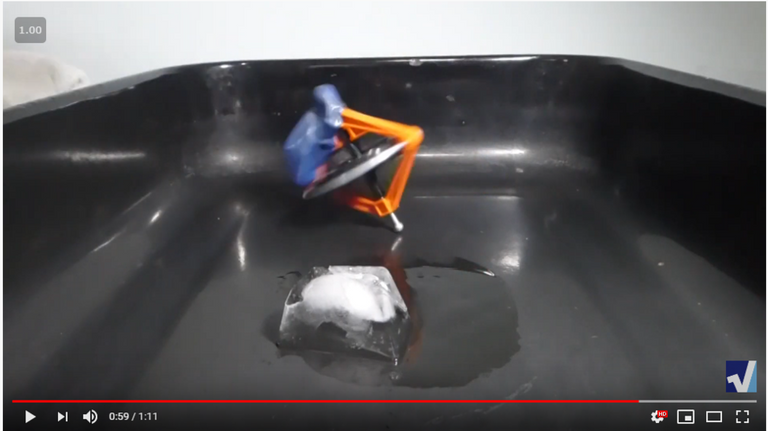






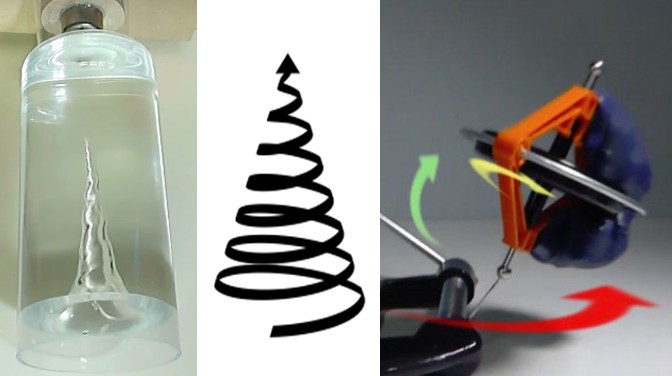



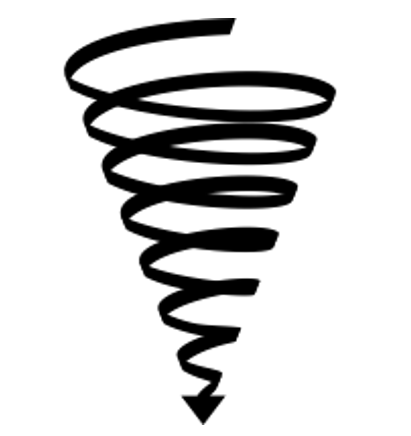
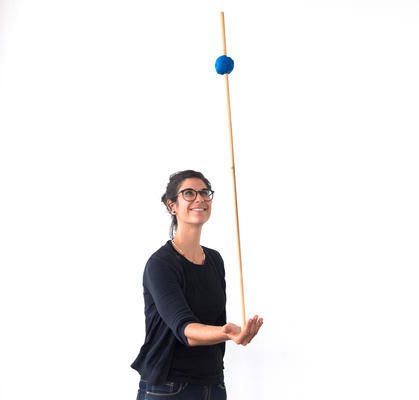
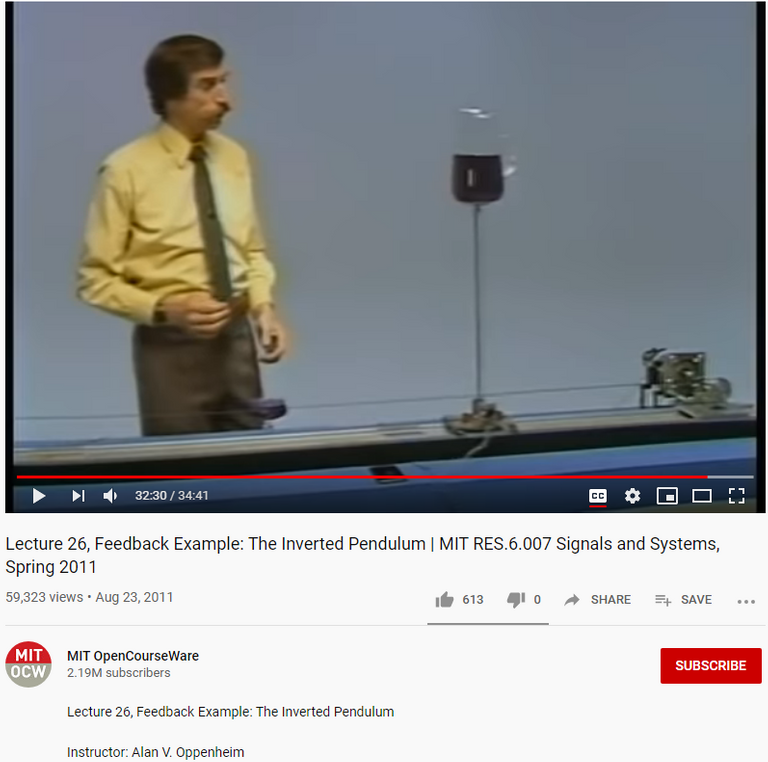
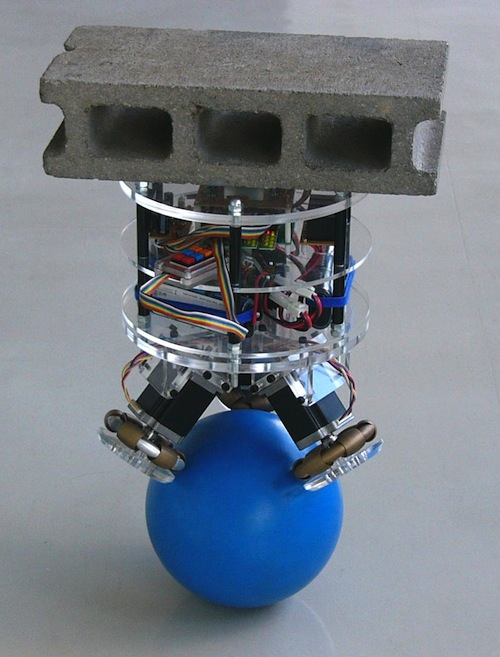


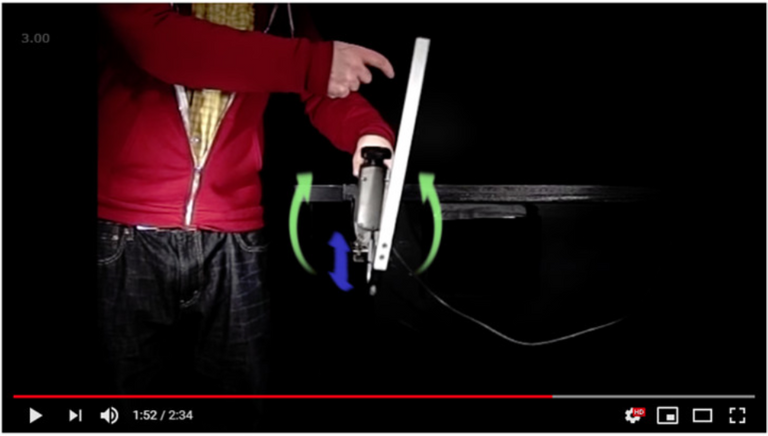
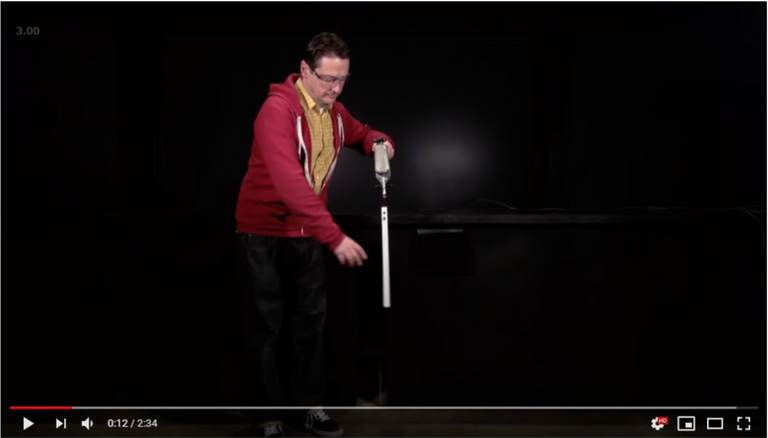




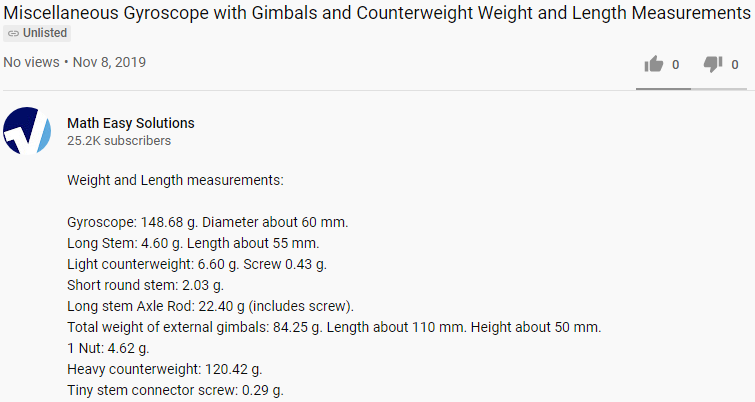
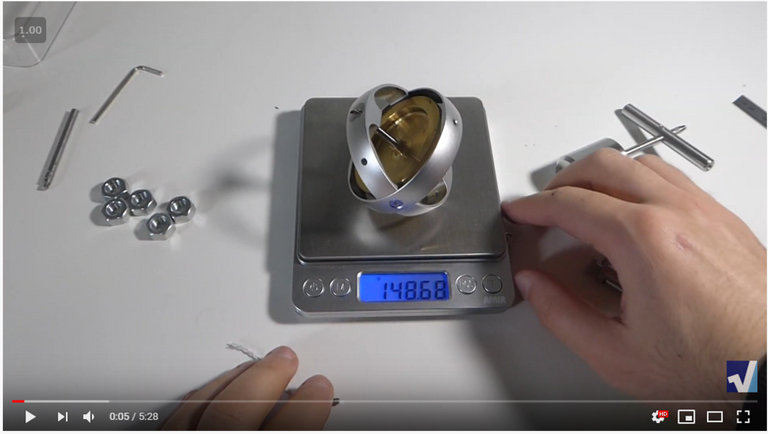

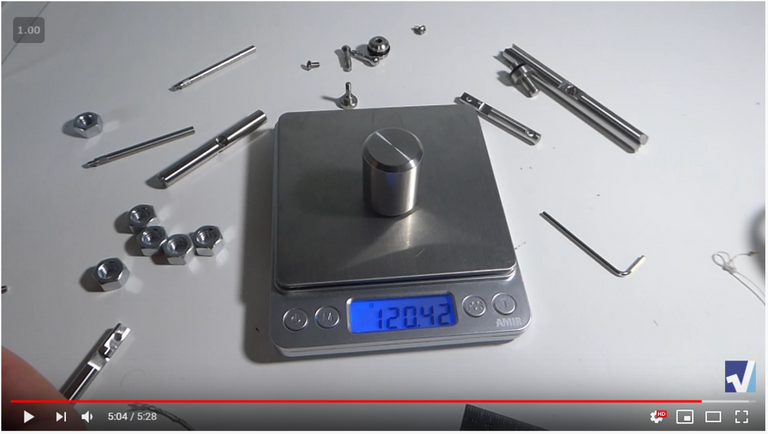
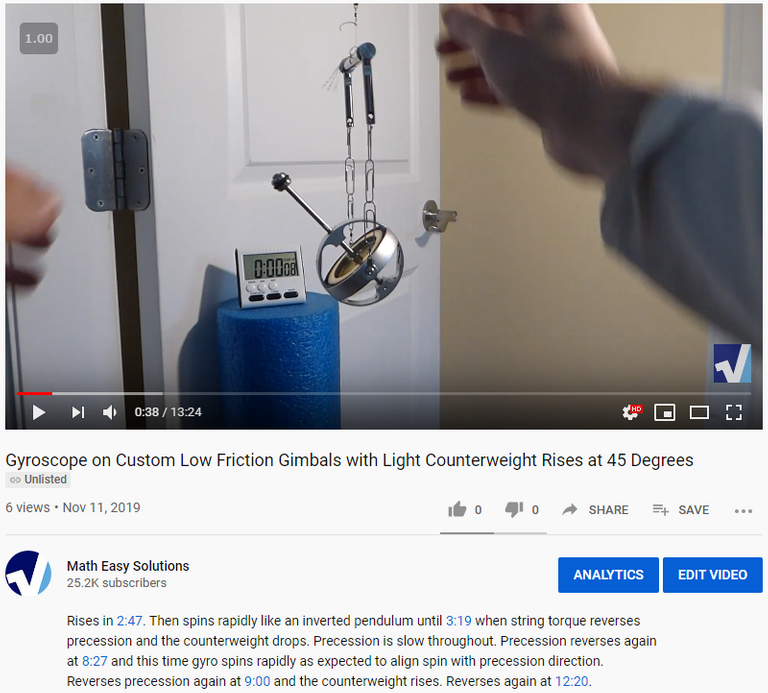

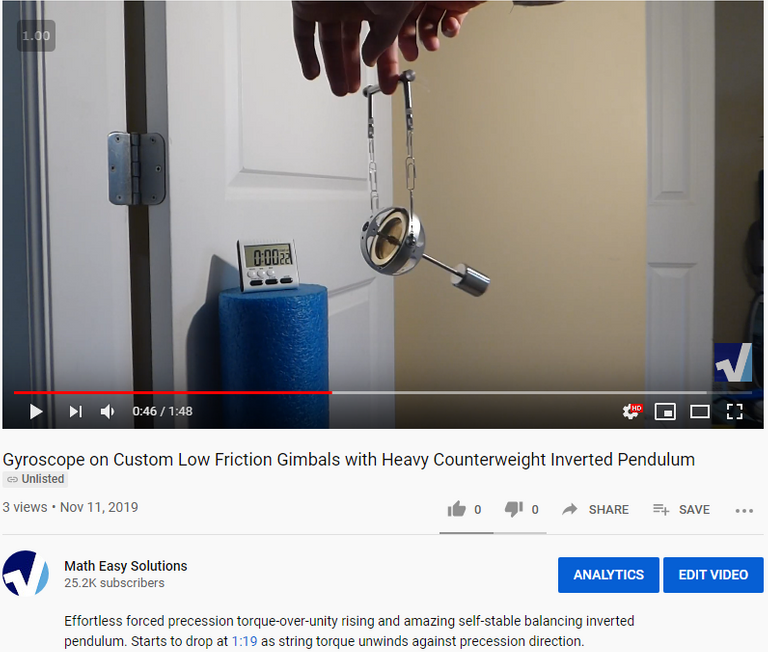

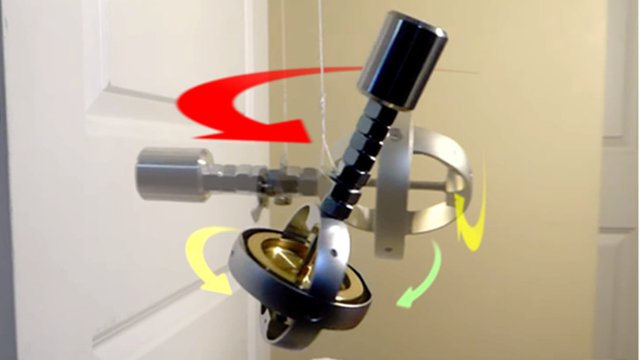
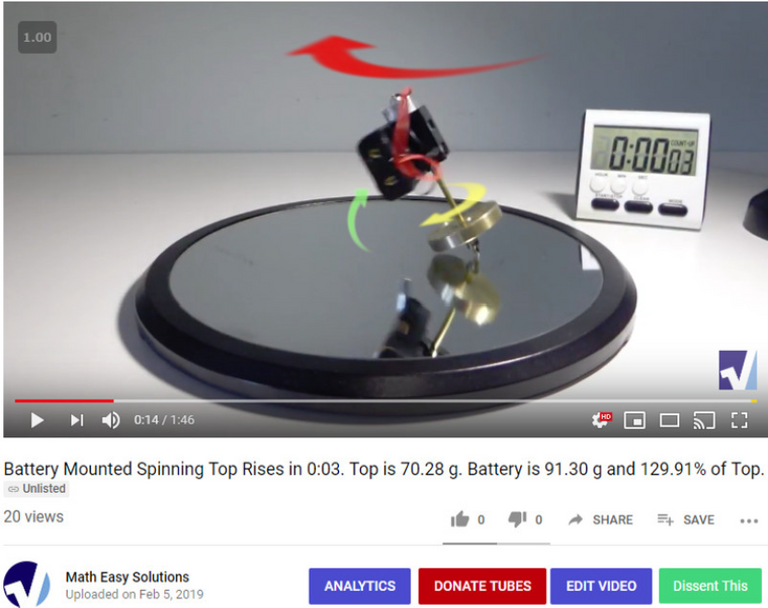


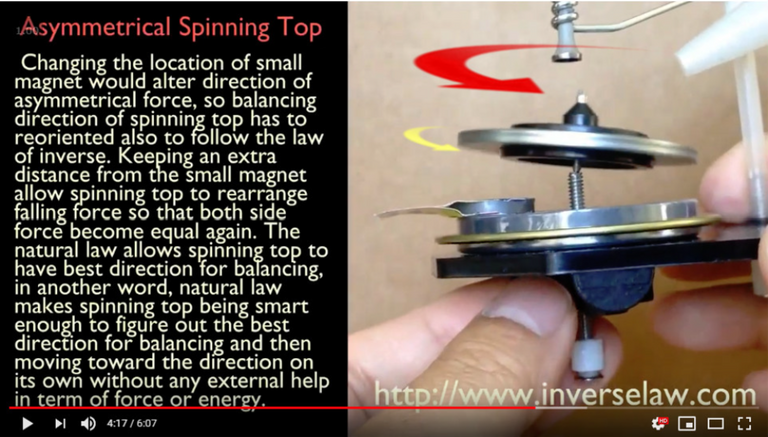
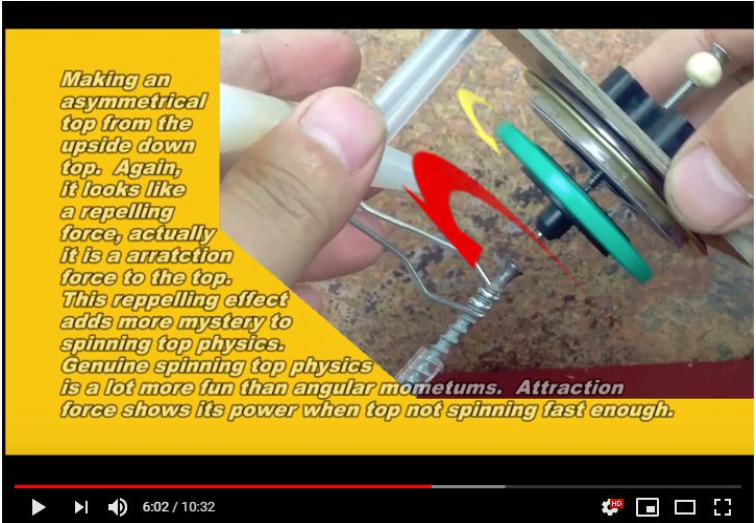

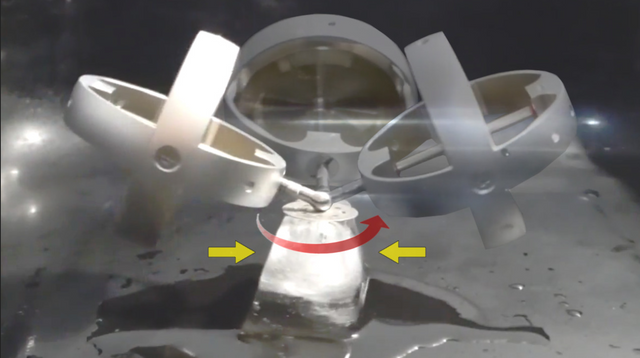


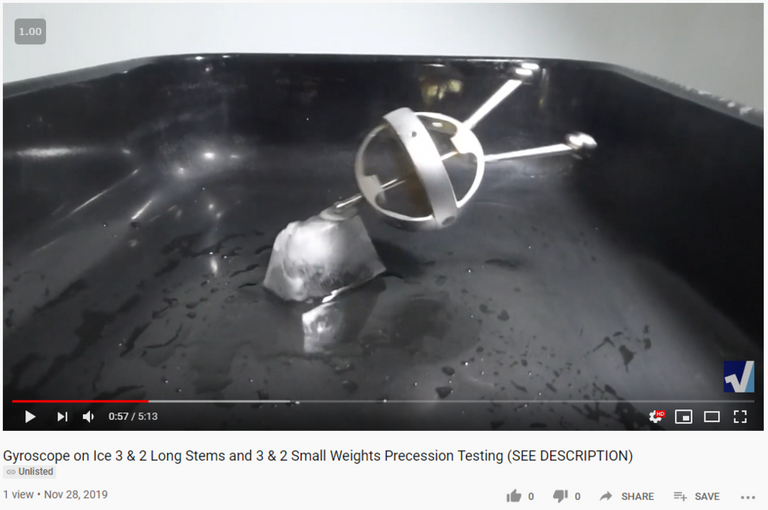



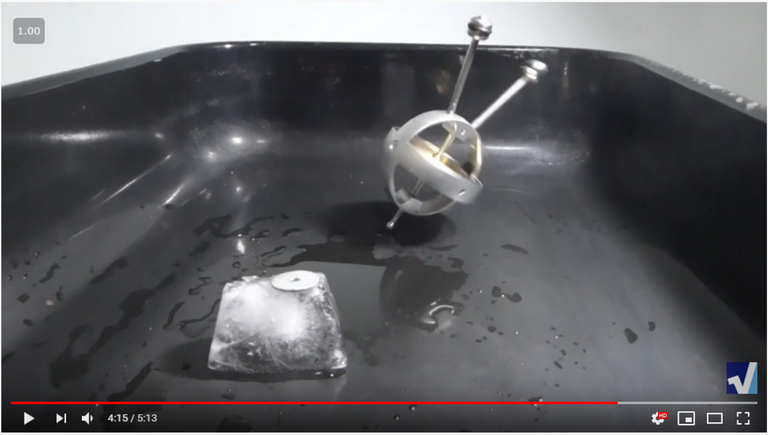


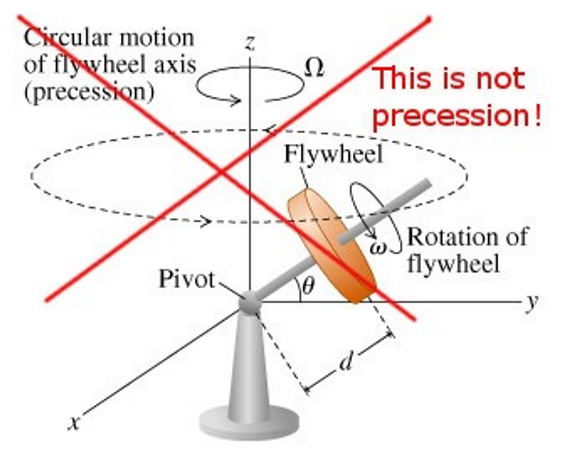
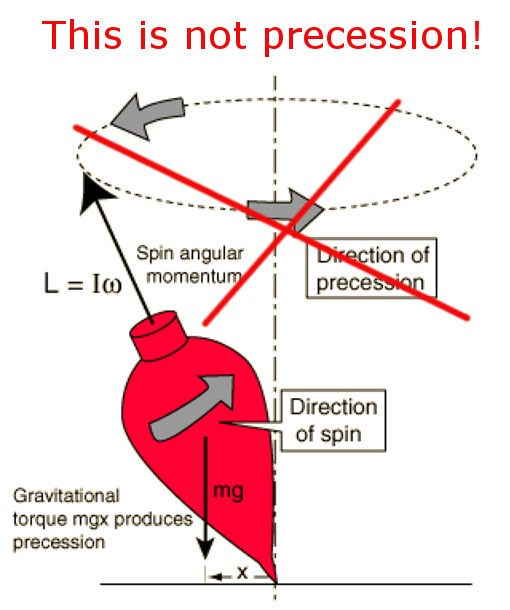

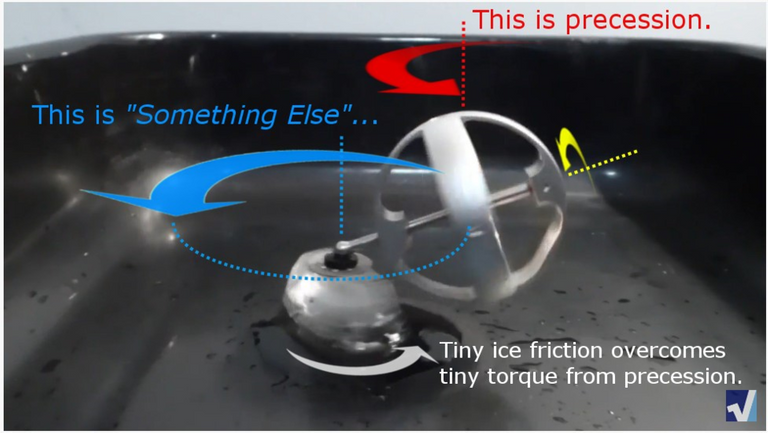

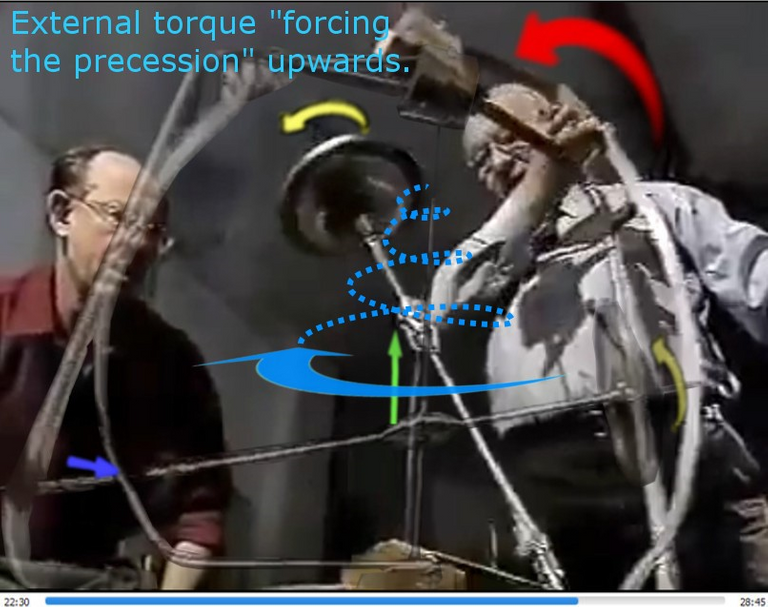



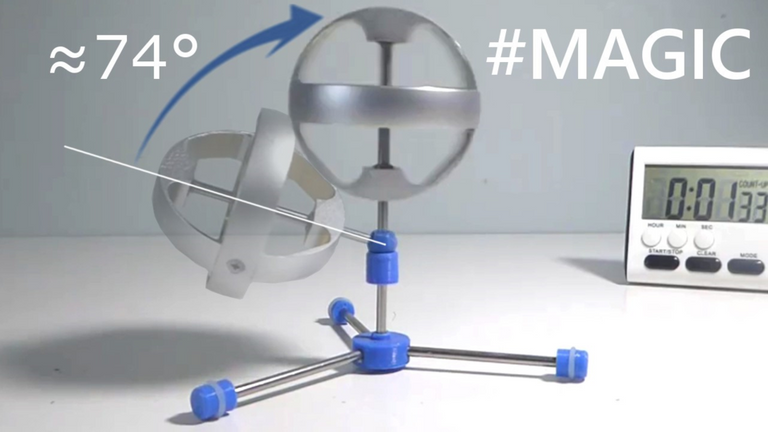

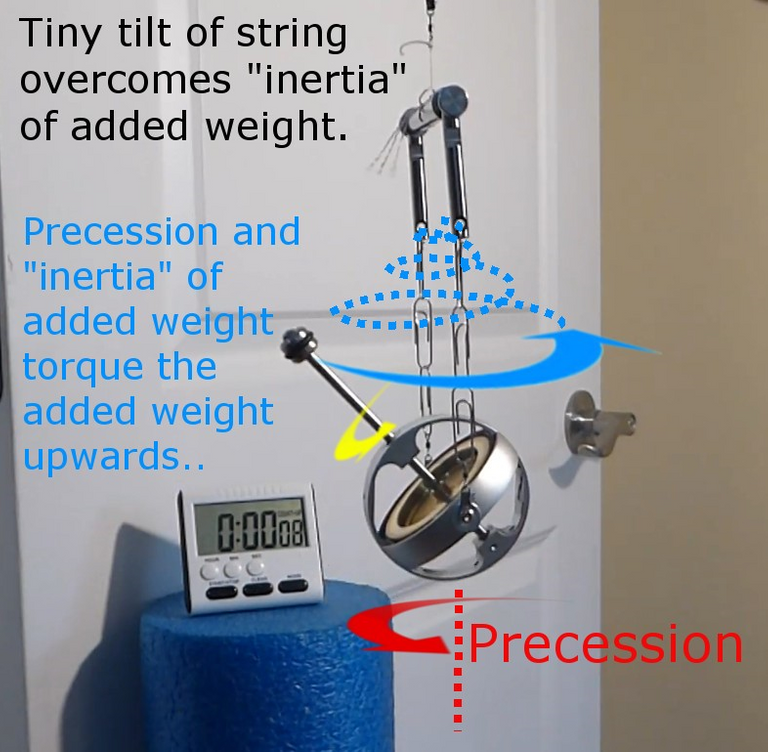



Hello,
Your post has been manually curated by a @stem.curate curator.
We are dedicated to supporting great content, like yours on the STEMGeeks tribe.
If you like what we are doing, please show your support as well by following our Steem Auto curation trail.
Please join us on discord.
Very good tutorial, creative idea